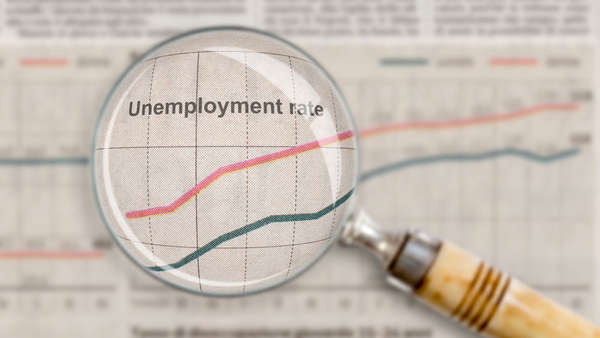The commission was tasked with determining what constitutes competitive teacher pay in Indiana, along with providing recommendations for how to achieve it.

(Indianapolis, Ind.) – The Next Level Teacher Compensation Commission released its final report on improving teacher pay in Indiana.
During Governor Holcomb’s 2019 State of the State Address, he announced that volunteer citizen members would make up the Next Level Teacher Compensation Commission as part of his efforts to make teacher pay competitive with neighboring states.
The task for the commission was to determine what constitutes competitive teacher compensation in Indiana, along with providing recommendations for how to achieve it.
The report takes a deeper look into why competitive teacher pay matters, factors contributing to the teacher pay gap, recommendations to school corporations and to the state government, and the cost of competitive compensation.
Why Competitive Teacher Pay Matters:
Competitive compensation for teachers is important for ensuring the success of Hoosier students through high-quality education. Strong education systems require skilled teachers, but it also requires being able to retain teachers through competitive compensation.
The Commission found that schools in Indiana in general have not been paying their teacher's competitive salaries in recent years. The Commission added that non-competitive pay can lead to decreased popularity of entering the teaching profession, impacts the quality of students' instruction, and increases levels of teacher attrition.
Between 1999 and 2013 over 4,000 individuals completed a teacher preparation program in Indiana. This number has fallen below 3,600 each year since and decreased below 3,105 in 2017-18, which is a 29 percent drop.
Indiana’s teacher attrition rate increased from 10.4 percent in 2010 to 13 percent in 2018. The average attrition rate nationally is approximately eight percent.
Indiana data supports findings that school corporations with higher average teacher salaries have lower percentages of teachers that leave the district is 48. In 2018, 88 districts (30.4 percent) had attrition rates greater than 15 percent. None of these were among the 12 districts with average salaries over $57,500.49. Only 10 of the 50 highest-paying districts had attrition rates above the state average.
The Cost of Competitive Compensation:
One of the biggest challenges that came up is cost.
Indiana has more than 65,500 public school teachers throughout the state. The average salary of those teachers is approximately $53,100.
A $60,000 competitive salary target was identified using data from the 2018-19 school year. Assuming pay increases in neighboring states, the pay target would increase to $60,630, which is up $7,530 more than the 2019-20 average salary of $53,100.
Multiplying the competitive pay gap by the total number of teachers reveals there is a teacher salary shortfall of more than $490 million.
After doing the math, the Commission concluded that more than $600 million is needed in additional compensation for teachers in Indiana.
The Recommendations
For School Corporations
- Join the state’s pharmacy benefit plan (estimated $25 million in annual savings to school corporations)
- Limit working spouses’ participation in district health care plans (estimated $50 million in annual savings for school corporations)
- Exclude Medicare-eligible retirees from healthcare plans.
- Increase utilization of centralized procurement.
- Join a liability risk pool.
- Right-size district teacher and staff ratios where appropriate.
- Share services with other districts and external organizations.
- Implement additional best practices.
- Pass an operating referendum (estimated $80 million in additional annual funding)
- Increase Medicaid reimbursement claims.
- Increase private contributions through foundations.
- Award higher salaries to teachers with high-need students and in teacher shortage subject areas
- Improve flexibility for teachers to control their individual compensation through career ladder systems.
For State Government
- Pay down pension debt (estimated $50 million in annual savings)
- Improve procurement practices.
- Incentives for expense reallocations.
- Remove barriers to school corporation consolidation.
- Means-test Indiana’s 529 plan tax credit (estimated $50 million in additional revenue)
- Expand Medicaid reimbursement.
- Township flexibility.
- Tax increment financing.
- Allowing deficit financing for school corporations with large cash reserves.
- Encourage private donations to schools.
- Reduce duration restrictions on referendum tax levies.
- Establish a teacher pay tax return check-off.
- Local impact fees.
- State revenue increase.
- Implement a statewide professional pathways compensation model for teachers.
- Minimum salary.
- Require teacher salaries to constitute at least 45 percent of each district’s tuition support.
- Funding formula changes.
- Ensure compensation transparency for teachers.
- Improve school corporation data accessibility and transparency to the public:
- Expand efforts to recruit more minority teachers to the profession:
- Improve non-compensation-related job satisfaction among teachers (administrative):
Conclusion
“While Indiana has a significant gap to bridge before reaching competitive teacher pay, the state is well-positioned for the task. There are multiple paths to competitive compensation, and the 37 recommendations in this report provide a roadmap to school leaders and state lawmakers for achieving compensation levels and practices that will elevate the teaching profession, making Indiana’s teaching positions more attractive to the best educators and ensuring our students receive an education of the finest quality.”

 KOI Superior Walls Locating New Manufacturing Facility in Boone County Creating 73 Jobs
KOI Superior Walls Locating New Manufacturing Facility in Boone County Creating 73 Jobs
 Epic Flight Academy Cuts Ribbon on New Aircraft Mechanic School at CVG Airport
Epic Flight Academy Cuts Ribbon on New Aircraft Mechanic School at CVG Airport
 State releases county unemployment data for March 2024
State releases county unemployment data for March 2024








